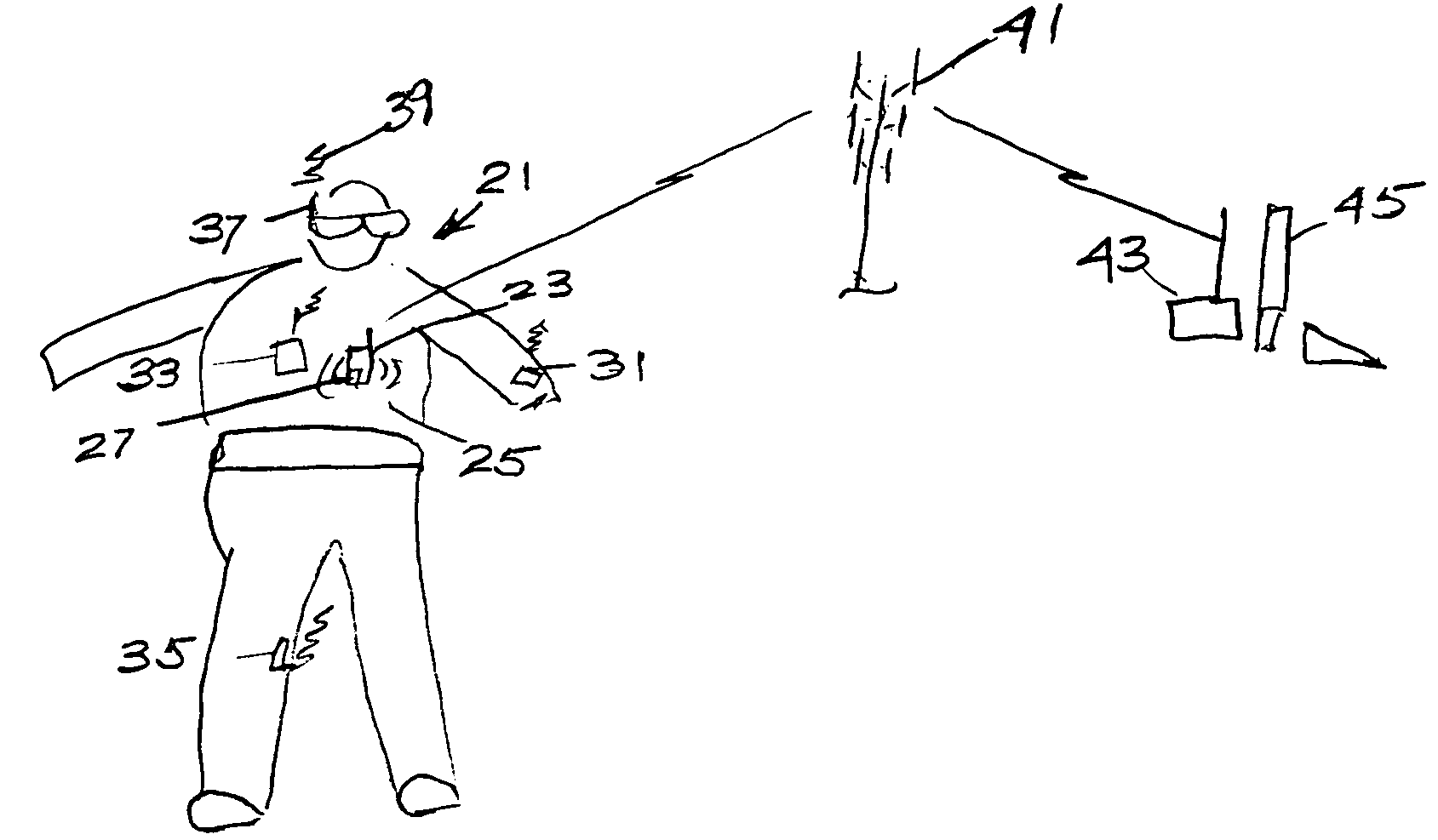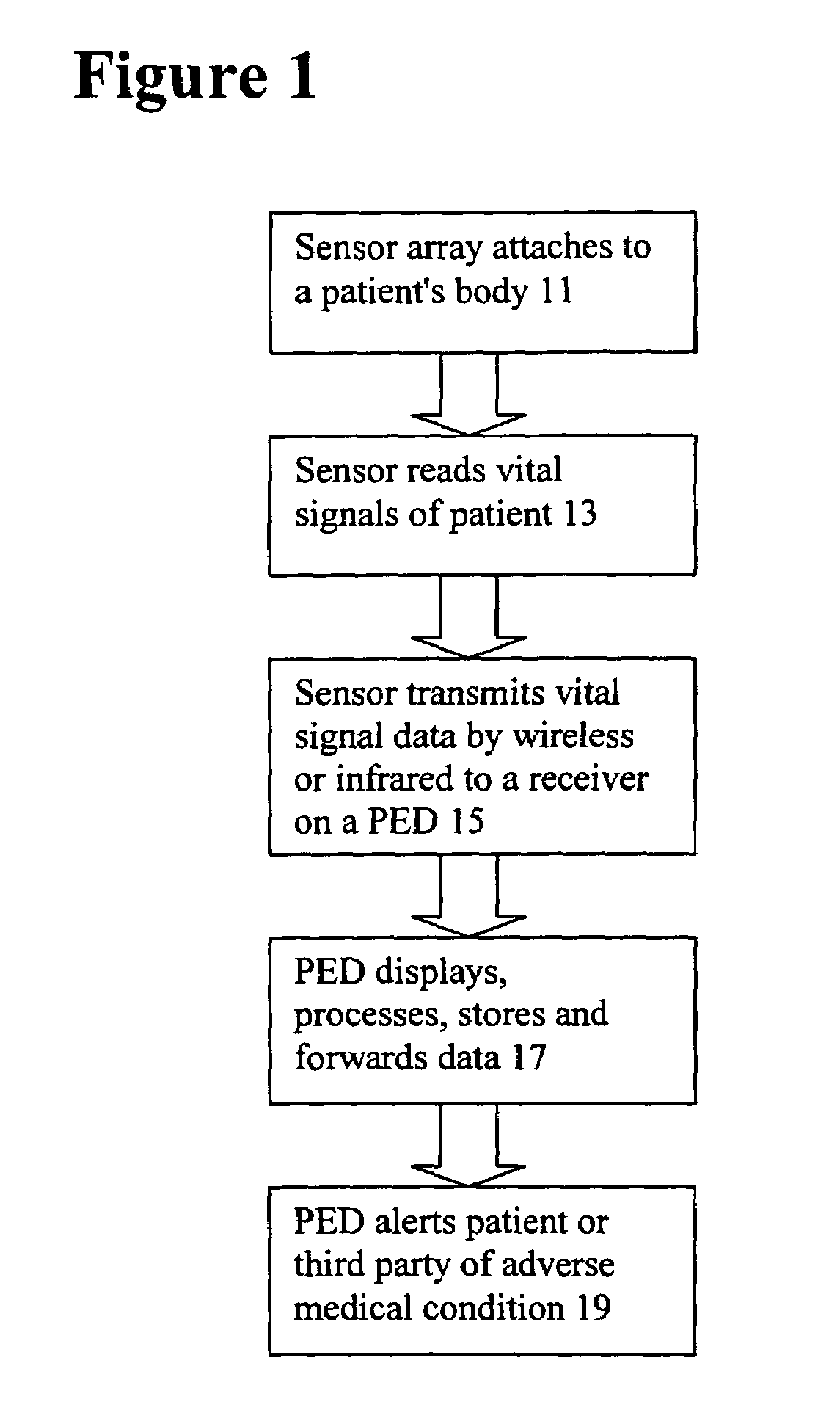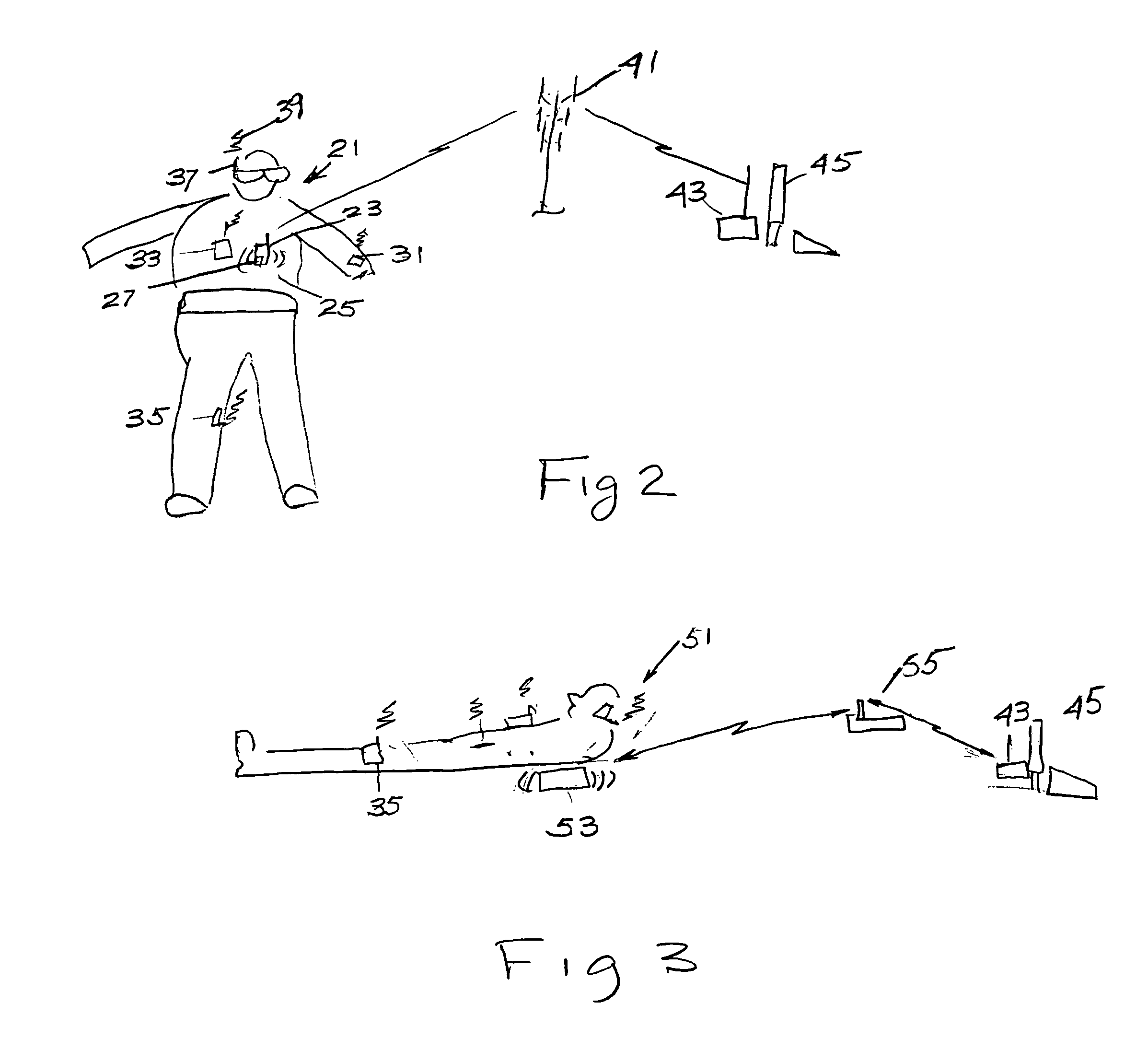Vital signals and glucose monitoring personal wireless system
a wireless system and signal technology, applied in the field of vital signals and glucose monitoring personal wireless system, can solve the problems of long-term illness effects or even death, severe long-term effects of conditions, and inability to recognize warning signs of adverse medical conditions, so as to achieve accurate and consistent measurement of glucose levels in the blood
- Summary
- Abstract
- Description
- Claims
- Application Information
AI Technical Summary
Benefits of technology
Problems solved by technology
Method used
Image
Examples
Embodiment Construction
[0032]The present invention integrates medical monitoring technologies with wireless networks to wirelessly send signals from a monitoring device on a patient to a cellular telephone or other personal electronic device (PED). A thin, lightweight, flexible sensor is placed inside or on the patient's body. Information from the monitoring sensor is transmitted by wireless or infrared technology to a nearby and / or remote cellular telephone or other personal electronic device. By placing the heavier, bulkier components of the monitoring system in the cellular telephone or other personal electronic device, the patient is freed from the restriction of wearing a heavy, awkward device and is thus able to move without restraints. The information transmitted to the cellular telephone or other personal electronic device may then be displayed, processed, stored or forwarded to another location if needed.
[0033]The monitoring system of the present invention monitors a variety of bodily processes, ...
PUM
 Login to View More
Login to View More Abstract
Description
Claims
Application Information
 Login to View More
Login to View More - R&D
- Intellectual Property
- Life Sciences
- Materials
- Tech Scout
- Unparalleled Data Quality
- Higher Quality Content
- 60% Fewer Hallucinations
Browse by: Latest US Patents, China's latest patents, Technical Efficacy Thesaurus, Application Domain, Technology Topic, Popular Technical Reports.
© 2025 PatSnap. All rights reserved.Legal|Privacy policy|Modern Slavery Act Transparency Statement|Sitemap|About US| Contact US: help@patsnap.com



